Hoping this helps any folks who are new/newer to deep litter and wonder about when/how cleanouts would be done.
We get a lot of rain in fall and spring. Summers are fairly dry (which makes sifting out broken down deep litter fairly easy), so end of summer is the optimal time for me to scrape out old deep litter (about 3 years worth of accumulation at this point) to drop down the level of litter a bit before new chips get added for drainage. With the forecast calling for a week of rain on the horizon I have to work double time to get this done. Still not completely finished (I snapped photos halfway through) but I'm on track to finish before the rains come.
I scraped up and sifted the deep litter through hardware cloth into buckets. Big pieces of debris got tossed back into the run. The "dirt" (broken down leaves, grass, wood particles, hemp, chicken poop) went into a 1 cubic yard sized bag, and will be a nice addition to to my garden beds next year. I had anticipated removing about 1/2 cubic yard of dirt but managed to harvest 1 full cubic yard.
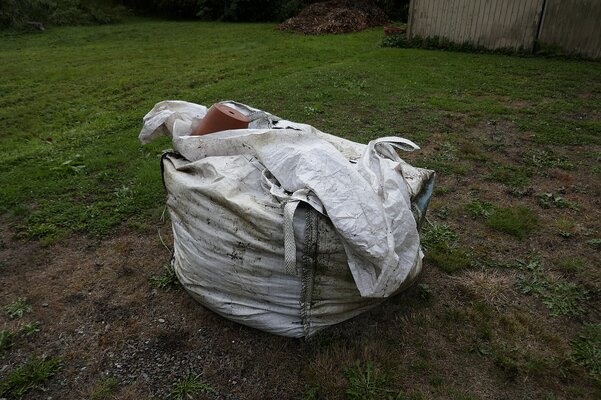
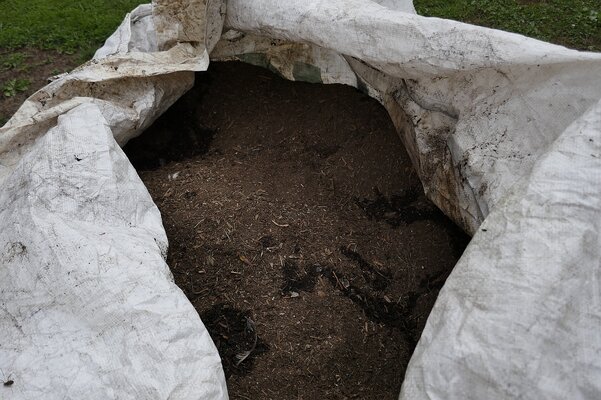
Once the extra dirt was removed, I added new chips. This chip pile contains a mix of fir, hemlock, cherry, Western cedar, willow from our lot. Since the pile is still relatively fresh, about 2 months old, to be safe I'm strictly using chips from the surface layer.
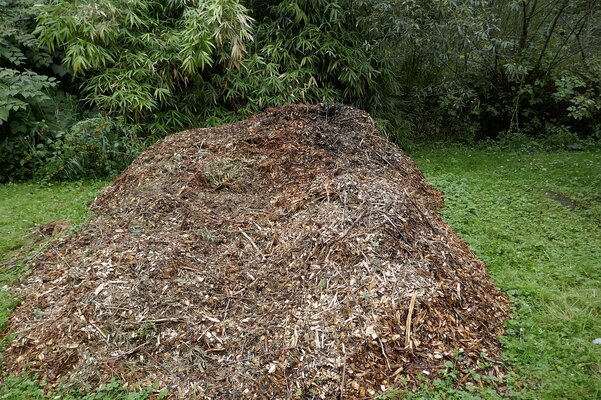
One side of the run done, with about 1-2" of new chips:
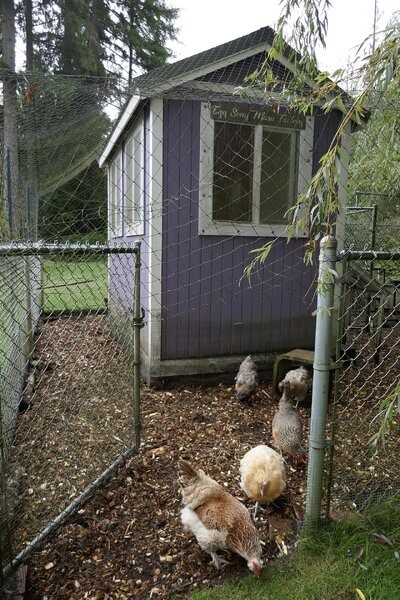
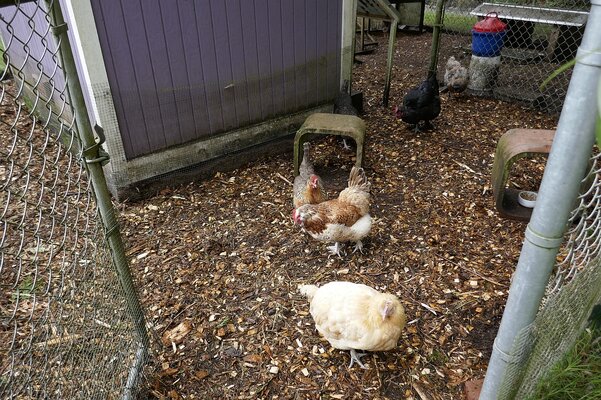
Done side on left vs in-progress on right:
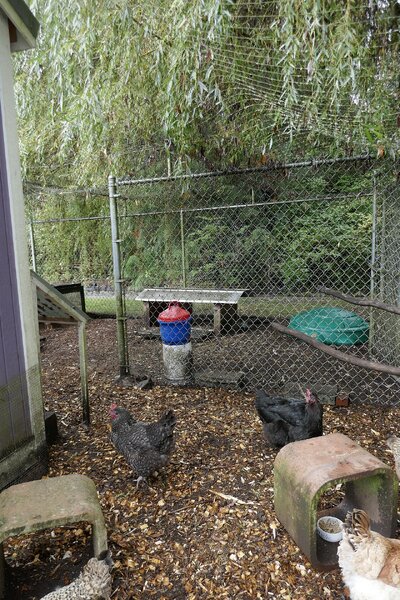
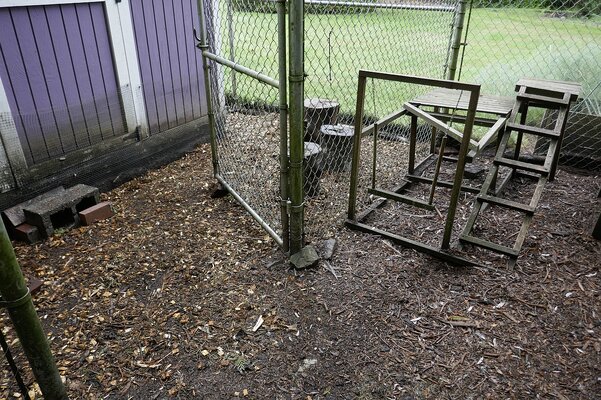
Once chips are down to provide drainage I can add dried leaves again. I bag excess leaves for use in the run and in composting throughout the year. I still have a few leftover bags of dried leaves in the greenhouse from last year. Soon the entire greenhouse will be filled with new bags.
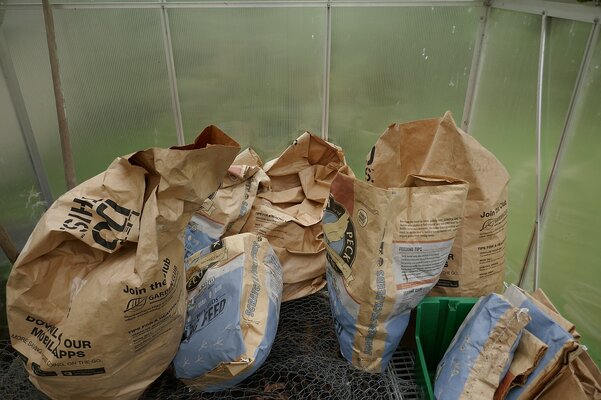
We get a lot of rain in fall and spring. Summers are fairly dry (which makes sifting out broken down deep litter fairly easy), so end of summer is the optimal time for me to scrape out old deep litter (about 3 years worth of accumulation at this point) to drop down the level of litter a bit before new chips get added for drainage. With the forecast calling for a week of rain on the horizon I have to work double time to get this done. Still not completely finished (I snapped photos halfway through) but I'm on track to finish before the rains come.
I scraped up and sifted the deep litter through hardware cloth into buckets. Big pieces of debris got tossed back into the run. The "dirt" (broken down leaves, grass, wood particles, hemp, chicken poop) went into a 1 cubic yard sized bag, and will be a nice addition to to my garden beds next year. I had anticipated removing about 1/2 cubic yard of dirt but managed to harvest 1 full cubic yard.


Once the extra dirt was removed, I added new chips. This chip pile contains a mix of fir, hemlock, cherry, Western cedar, willow from our lot. Since the pile is still relatively fresh, about 2 months old, to be safe I'm strictly using chips from the surface layer.

One side of the run done, with about 1-2" of new chips:


Done side on left vs in-progress on right:


Once chips are down to provide drainage I can add dried leaves again. I bag excess leaves for use in the run and in composting throughout the year. I still have a few leftover bags of dried leaves in the greenhouse from last year. Soon the entire greenhouse will be filled with new bags.






 ) and a bit around the two terracotta cubbies and by the lower gate itself. So I put in another cart load of chips this morning in that general area and elevated the cubbies a bit, and I think that'll take care of drainage for this season.
) and a bit around the two terracotta cubbies and by the lower gate itself. So I put in another cart load of chips this morning in that general area and elevated the cubbies a bit, and I think that'll take care of drainage for this season.